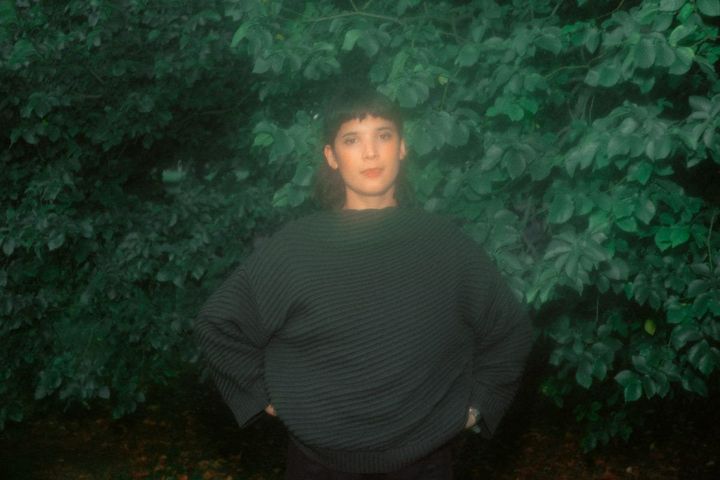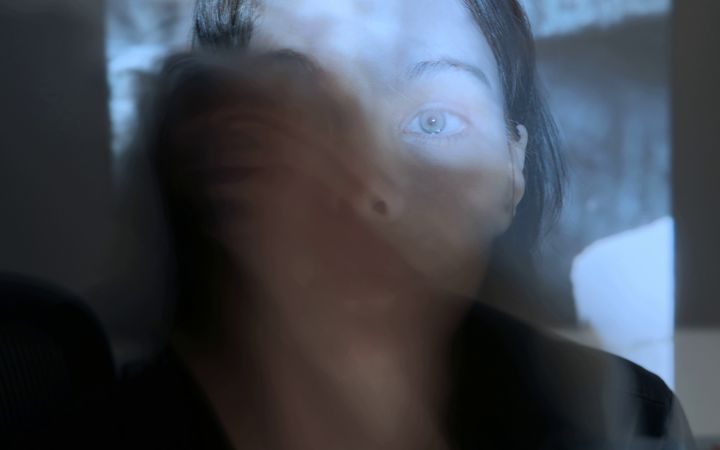Interview: Lawrence English

Madeiradig Festival seems pretty special. Both lineup and location look fantastic. Are you looking forward to it?
I’ll admit it. Any chance to spend a moment with Tony Conrad is a moment I look forward to. It’s been about a decade since I first met Tony, we hosted him for Liquid Architecture, a festival I co-curated for about 10 years. We had the opportunity for a very long bush walk one day, where he regaled me with a history of his youth. It was fascinating and on the subsequent occasions we’ve crossed paths I’ve valued his company immensely.
That coupled with a genuine interest in the work of all the other artists there, not to mention the island itself, makes it a very special trip. I have to congratulate the curator Michael Rosen on creating such a unique event and too, creating such rich line-ups of artists. It’s no easy feat, but he makes it look like child’s play, the signature of a master no doubt!
You refer to Wilderness Of Mirrors as you “yelling into what seems to be an ever-growing black abyss”. Is “yelling” a verb you’d use to describe any other of your records, or is this the first?
That’s a good question. I’d say the one that comes closest, and by this I mean was born out of the same frustrations would be It’s Up To Us To Live. That record very directly came out of similar concerns with the ways in which certain conditions of humanity seemed to be being dismantled. That record was something created very quickly in a way. The pieces took form with a real pace.
I think with Wilderness Of Mirrors, the sense of disillusionment I felt with the state of things was more calculated. I recognised that to properly express what it was I wanted to across that record, would take time and concentration. It was quite the opposite process to something like It’s Up To Us To Live. I think, at least in terms of aesthetics it also shares a strong linkage to Kiri No Oto, though I’d argue the concepts that guided that record were stemming from a different place.
Out of all of your records that I’ve heard, this is definitely the one where listening takes place most prominently throughout the entire body rather than just through the ears (when played over speakers at high volume, at least). I’ve seen you talk about how you saw the likes of Swans, My Bloody Valentine and Earth during the making of the album, which makes me think that this quality may have been deliberate. Is that the case?
I think we have two ways of listening as audience. We listen with our ears, which for me is a kind of psychological listening, where we build an intellectual response to the music. The second way to listen in via our bodies and to me this embodied listening is a vital pivot point for the power of music and for that matter for the power of sound more broadly.
To me that physical power of air compressing is really a profound thing. You feel it as an individual, but there is a collective impact in, say, a concert setting. Somehow, everyone in that space and time, shares this deeply internal and personal experience. I think that dichotomy or tension between the self and the communal is an interesting place to work and try to push the ways in which those experiences can happen.
How has this record changed your approach to presenting your music in the live environment?
I’ve only had the chance to perform these new pieces a few times. This concert for MadeiraDig will be one of the first in Europe for the Wilderness Of Mirrors material and from that perspective I am excited to be performing.
The new record is very much designed for the live experience and I think in some respects it is kind of transformed in the live setting. There’s an opportunity for the body to be enveloped in the sound, like we discussed before, that is fairly much unattainable with home listening. I think that aspect, the chance for the body to be consumed by the vibrations, is a hugely important part of this record. The concert for MadeiraDig will in fact feature large slabs from Wilderness Of Mirrors and some pieces from The Peregrine, which again is a record built around that idea of frequency saturation.
There are a couple of really nice phrases in the press release that point toward the process of putting Wilderness Of Mirrors together: “flood of compositional feedback” and “erasure through auditory burial”. What is it about working this way that interests you?
Composition is a negation of chaos, at least in a traditional sense. It puts in place markers and devices through which a set of choices are constrained to push toward a certain outcome. John Cage worked against this constraint with great vigour, but still, even his more chaotic works can be rendered in very conventional ways, much to his disapproval I’d suggest.
I think one of the aspects I wanted to explore with this album was a freeing up of how elements that share a correlation can be made to work in unexpected ways. This idea of feeding back elements upon themselves and creating erasure through iteration became a very powerful tool for me and I think it’s use on Wilderness Of Mirrors is probably the most resolved to date.
When taking this approach to composition, is it easy to know when the pieces have reached a state of completion?
No. I think recognising when something is finished, is one of the most challenging processes for all artists, especially those who are just getting started. I often talk about this with young musicians and composers, there’s nothing worse than overworking something and ending up with a lifeless corpse of the music that could have been. For me, over the past half-decade I have really focused on this question, and become incredibly critical about the way I make work. This has both pros and cons, but I feel that it’s more important than ever to slay anything you think falls short of your own benchmarks. It’s too easy to publish, so the pressure is on us all to make choices about what needs to be heard and what should otherwise remain private.
Your cassette label “A Guide To Saints” has been in operation for a couple of years now. I’ve enjoyed re-engaging with cassettes myself over the past couple of years, given that it’s the medium of choice for the local DIY hardcore/noise scene here in Bournemouth. What draws you to the cassette tape as a medium?
Cassettes were the one really linear music medium. The album on cassette made so much sense for me. Sure you could fast forward if you really wanted, but it was a pain, it took time and effort in a way that encouraged most listener to actually engage with the music critically.
Like there’d an album where track 2 or 3 really would drive you mad, but to make it through the whole album you had to deal with that piece. You had to probe into it, and try and figure out what it was that piece of music contained that repelled you. It meant you developed a more criticality to music appreciation, which I still value today. I think as well with that medium, it’s shortcomings like surface noise through dubbing etc was hugely influential on my tastes. I was a massive tape trader in the early to mid-90s and those experiences really did shape my interests in music and probably, more than likely, texturality.
Other than Madeiradig, what’s next for you?
Right now I am in the middle of the North Island of New Zealand, which is always pretty magical. New Zealand has a real sense of pre-history about it. Both ancient and modern. Today we visited a shop in Otorohanga where the proprietor was proud to let me know he did everything by paper. It was like connecting with another decade sometime in the late 20th century. I found myself nostalgic for something that seems to have otherwise vanished. He sold me a very nice hat! Then we say a Kiwi, a bird that makes you remember we’ve only been here for the blink of an eye. Tomorrow I am giving a presentation around the theoretical framework I have developed around relational listening and field recording.
After MadeiraDig I am headed to Iceland to work on a project there and then it’s 2015 and Room40 is celebrating it’s 15th anniversary all year, kick off with a tour across Europe at the end of January and onward from there. Next year I will also be spending a lot of time working on some large scale installations for a couple of gallery shows, so it’s going to be another curious year I am sure.
Lawrence English’s website – http://lawrenceenglish.com
Madeiradig Festival website (5th – 8th December 2014) – http://digitalinberlin.eu
ROOM40 website – http://room40.org



